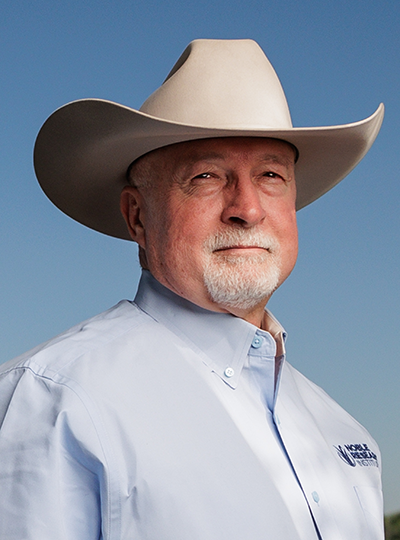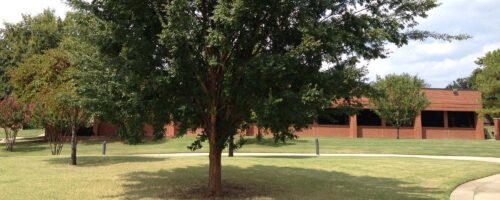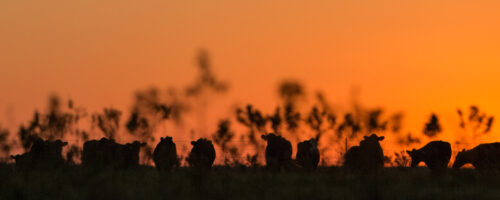Potential mob graziers should consider precautions
UHSD grazing is an approach to managing livestock on a land resource area that allows herd impact to be the catalyst for a beneficial outcome.
Allan Savory states in his book “Holistic Management” that stock density is the most under-utilized tool in grazing management implying that most graziers have yet to experience the full range of benefits possible from this tool. There are reasons for this; primarily, they have not taken time to use this tool at the ultra-high level. However, in recent years a few graziers have begun tapping into the potential of “mob grazing,” or ultra-high stock density (UHSD) grazing, touting its benefits in the popular press and stirring up interest and questions from livestock producers. For those who are considering giving UHSD grazing a try, here are a few precautions to ponder before you proceed.
1. UHSD is not for the novice grazier.
One needs to have the infrastructure in place to manage the entire herd in close proximity. You need to have adequate pen and corral space, adequate drinking water and recharge capabilities, adequate fencing with quality energizer to carry electricity to extremities of property, plenty of temporary electric fence supplies and appropriate equipment to quickly deploy it, AND some experience in managed multi-paddock grazing.
2. Start with a goal in mind.
With UHSD grazing, the focus is often on the landscape (herd impact), but there should also be emphasis on livestock performance. You don’t have to sacrifice performance to achieve landscape goals. Determine what the important outcomes are and how they will be measured. Monitoring instruments include grazing records, other observational records, photo points, soil samples and rangeland health tools, grazing exclosures, livestock production measures, etc.
3. UHSD grazing does not mean ultra-high grazing intensity.
In fact, it is just the opposite. Grazing intensity should actually decrease and the residual material should increase but with a high proportion of it left at or on the soil surface due to herd impact. Grasses should be top-grazed, taking the upper one-third of the plant in most instances. Cattle are moved to fresh grazing areas frequently, with multiple moves per day. Due to herd impact, recovery periods are usually longer thus lengthening grazing cycles, especially areas impacted during wet periods.
4. UHSD grazing requires adequate forage quantity to begin.
Set the initial stocking rate conservatively based on forage availability. Increase stocking rate only after forage production increases measurably. It is a good practice to learn how to apply UHSD grazing on something less than the whole. It doesn’t have to be an “all or nothing” approach. Cattle have to learn, too; it takes them a couple of weeks to adapt their grazing behavior to fit UHSD grazing. Best livestock performance occurs when a consistent routine is established.
5. There is no known “magical” stock density value that expedites the desired outcomes, but the greater the stock density then the greater the herd impact.
There is much ado in popular trade magazines about grazing at stock densities exceeding 1 million pounds of live animal per acre. At that stock density, the cattle have to be moved multiple times per hour per grazing period. One needs to fit UHSD grazing to their operation, management plan and labor capabilities. Implement UHSD grazing on areas where you want herd impact when convenient to management.
UHSD grazing is a management tool, an approach to managing livestock on a land resource area that allows herd impact to be the catalyst for a beneficial outcome. It is not a system to replace management deficiencies. UHSD grazing requires the best of management to achieve both landscape and animal performance goals. It is an adjustable tool to be used with a high degree of skill and flexibility. When beginning UHSD grazing, there will be much trial and error and much to learn. For more information about UHSD grazing, read “Holistic Management” by Allan Savory.
Aljoe’s Definition of Ultra-High Stock Density
Ultra-high stock density grazing is the management tool of grazing livestock in much higher than normal concentrations to achieve landscape-focused objectives with the long-term goal of enhancing soils, forages and livestock production. It is usually expressed in pounds of live-weight per acre at a given moment in time. Depending on the environment and forages, ultra-high stock densities are usually in excess of 100,000 pounds of animal live-weight per acre with some graziers exceeding 1 million pounds per acre thus requiring multiple moves to fresh pasture daily.



Comment